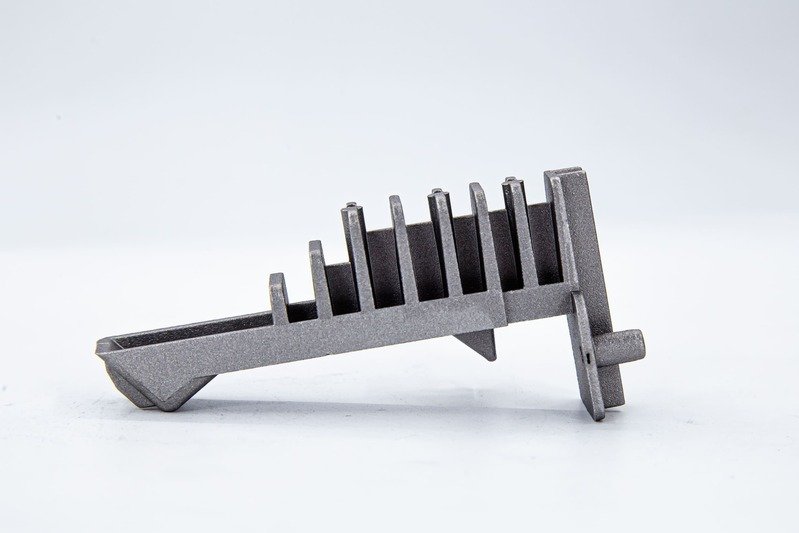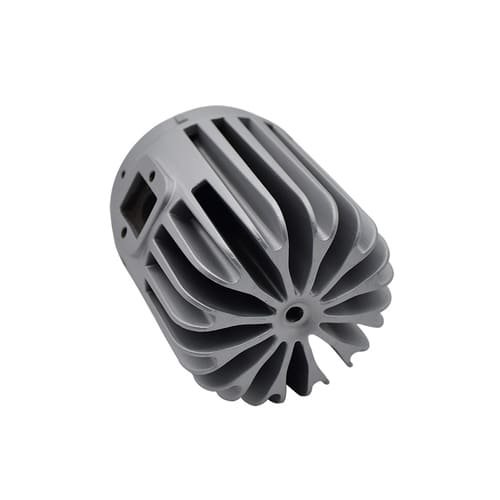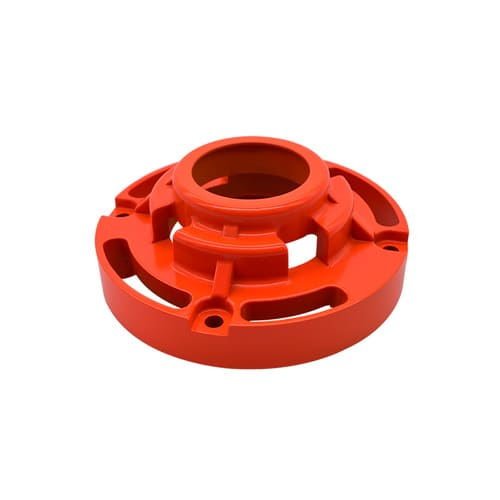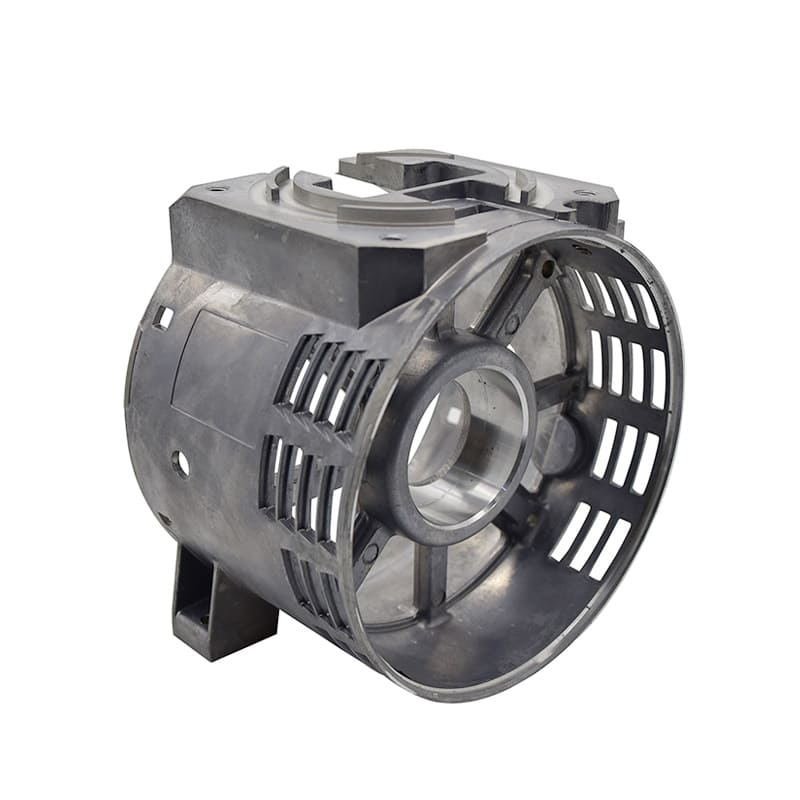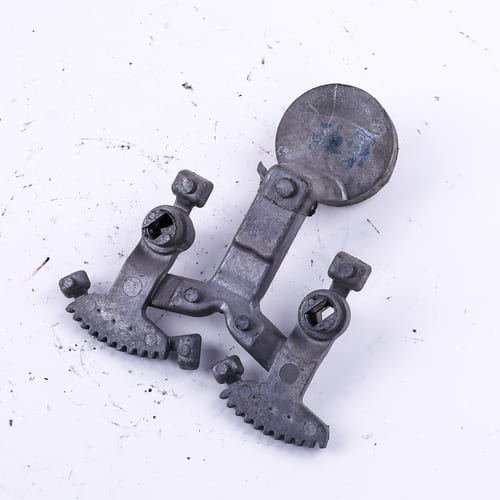Aluminum die casting for electric vehicles (EVs) is one of the cheapest but most effective ways to manufacture modern cars. The growing popularity of electric vehicles creates challenges for current automakers and provides opportunities for new competitors.
Tesla, for example, has placed itself firmly in the EV market as a pioneer of TWI’s friction stir welding approach. Moreover, Tesla has also made developments in integrated die-casting technology. It can die-cast almost all of the complex lightweight EV components through die casting.
Die casting is an essential element of the production of electric vehicles. This method offers many benefits over other manufacturing methods.
Castingod makes automotive parts using high-precision die casting for EVs. To fulfill the demands of the future electric car industry, it is focusing on sustainable die casting solutions for EVs.
Materials And Process For EVS Die Casting
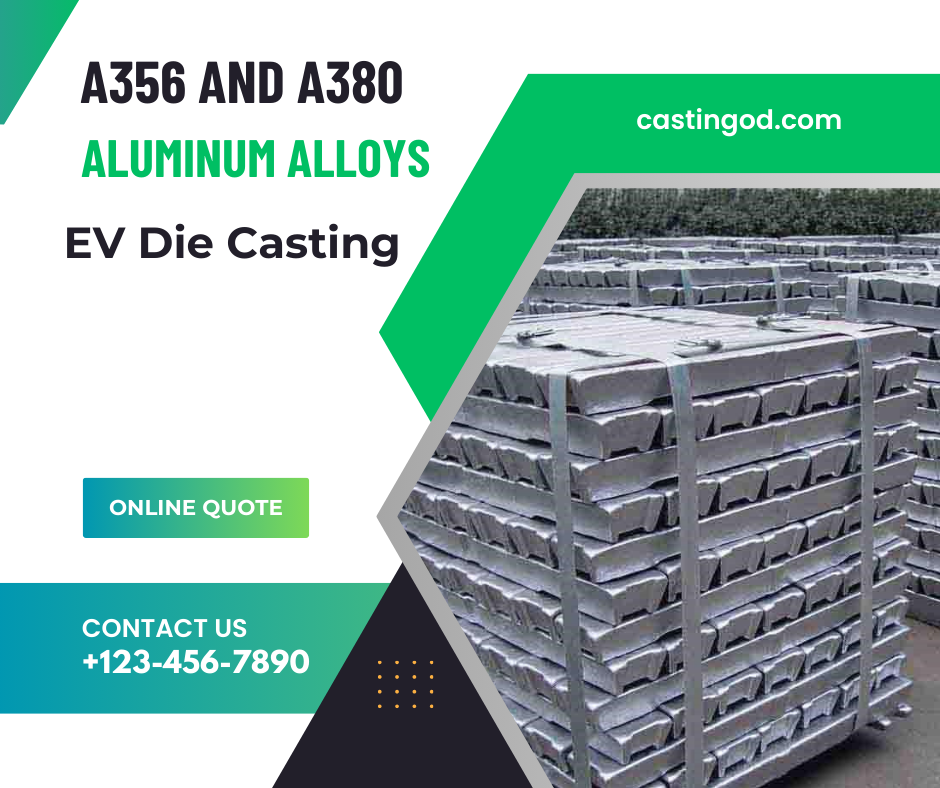
A356 and A380 aluminum alloys for EV die casting are considered the best materials for electric vehicles. But we shall focus on some other important alloys that are useful in custom automotive die cast parts.
Aluminum and magnesium alloys have important roles in die-cast parts for EVs because of their unique qualities that meet the demands of this industry:
Aluminum Alloys
- Aluminum alloys have great strength-to-weight ratios. They are important in increasing battery life and boosting vehicle efficiency.
- They enhance the performance of electric vehicle parts by resisting corrosion.
- Aluminum is recyclable, which fits into electric car environmental objectives.
Applications
- Aluminum die-cast housings ensure battery packs are secure and clean.
- Aluminum alloys help in the production of lightweight and robust electric motor casings.
- Aluminum’s strength and lightweight properties make it ideal for parts like panels, suspension parts, and structural parts.
Magnesium Alloys
- Magnesium alloys offer weight reduction without losing strength because they are more lightweight than aluminum.
- Magnesium is the perfect material to reduce vibrations because of its damping properties.
- Magnesium alloys are perfect for complex die-cast designs.
Applications
- Magnesium alloys can be found in interior parts and structural portions.
- The lightweight and tensile characteristics of these materials make them valuable for die-cast gearbox housings.
- Magnesium alloys also have vibration-damping properties that make them useful in particular for steering and structural parts.
Die-cast parts are vital for the performance of electric vehicles (EVs). The following parts are used in various areas of the electric vehicle:
Die-cast Motor Housings and Rotors for EVs
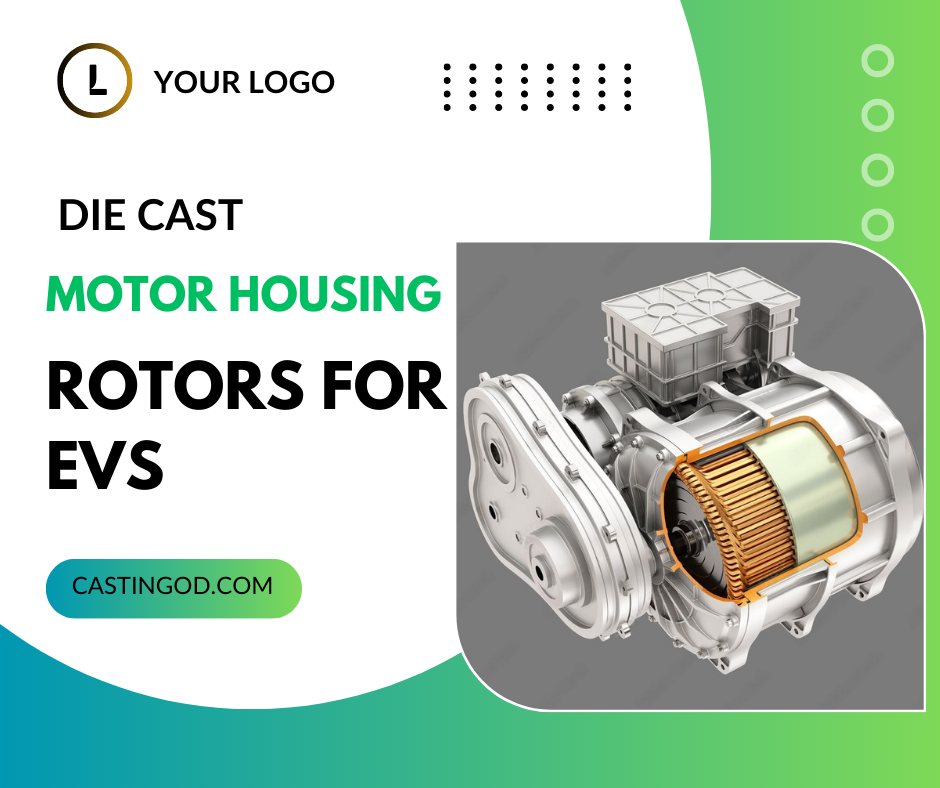
Die-cast parts are often used in electric motor housings because of their outstanding durability and heat-dissipation properties.
Battery Casings
Die-cast parts are often found in the battery pack casings of EVs. These casings should be strong, able to endure heat, and protect the battery’s internal parts. Die-casting materials like magnesium or aluminum are often chosen because of their characteristics.
Gearbox and Transmission Parts
Die-cast parts are vital to the gearbox and transmission systems because they provide precise production of intricate geometries and durability even under high pressures.
Structural and Chassis Parts
Die-casting processes are also used in the manufacturing of some EV chassis parts and structural parts. This includes parts such as steering housings, suspension pieces, and other brackets.
Advanced Die-Casting Methods
The growth of EV technology is highly dependent on a combination of power and precision in die-casting methods. The following are some ways that modern die-casting processes are affecting the EV market:
High-Pressure Die Casting (HPDC)
High-pressure die casting (HPDC) is the foundation of the growth of the electric vehicle (EV) industry. It enables high-pressure die casting for EV structural components. HPDC also improves the design of complex and lightweight parts.
HPDC improves the performance and efficiency of EVs parts, like:
- Battery housings
- Motor casings
- Chassis components
Vacuum Die Casting
Die-cast parts made using vacuum die-casting have a much higher quality due to the air-extraction process.
By using this method, air is taken out of the die chamber, making parts of better quality and surfaces without flaws. The improved surface polish enhances the longevity and functionality of components used in EVs.
Thixoforming: for Complex Parts
Thixoforming is the process of using metal in its semi-solid state to make parts with intricate shapes and outstanding strength. With a unique combination of strength, intricacy, and precision, the method makes it possible to produce parts that are essential for electric vehicles.
Thixoformed parts with excellent mechanical properties are used in key areas, enhancing EV performance and efficiency.
Challenges and Futures
The above techniques have made it possible to create complicated parts with thin walls and accurate geometries, which are perfect for electric car parts such as:
• Battery pack management systems components
• Power electronics housings
• High-voltage connectors and busbars
3D Printing and Beyond: The Future is Here
3D printing is quickly replacing traditional die-casting methods in the manufacture of some electric vehicle parts. Although die-casting has advantages of its own, 3D printing offers its own set of advantages:
Revolution in 3D Printing
3D printing has revolutionized the die-casting methods. Now, die casting can produce complicated and detailed components with the aid of 3D printing. With the help of this technology, prototyping methods are simplified, allowing for quick iterations and customized die-cast parts with shorter lead times.
Hybrid Approaches
Hybrid approaches that improve conventional manufacturing are possible when die-casting methods are combined with 3D printing. Die-cast parts are made quickly and of better quality by using 3D printing to make complex cores. This speeds up the manufacturing process while maintaining standards of excellence.
Materials Innovative
Die-casting in electric vehicles is being driven to new limits by advancements in materials science. Highly engineered materials suited to additive manufacturing have better features such as higher strength, increased electrical conductivity, and better thermal management. These materials provide maximum performance and durability since they are made to meet the strict requirements of EV components.

FAQs
Which parts are die-cast in vehicles?
Casting is widely used in the manufacturing of engine blocks, wheels, gearbox housing, carburetors, fan clutches, pistons, etc.
Why is die-casting ideal for cars?
First, lighter cars are becoming more popular in the automotive sector. Die-cast pieces are thinner and more lightweight than other parts, which makes this possible.
Which alloys are used in EVs?
EV bodies often consist of common alloys from the 6XXX series, like 6061, 6016, and 6111. Alloys with high corrosion resistance, such as 5182 and 5754, are also widely used.
What role does aluminum play in the EV industry?
Aluminum is vital for the automotive industry due to its:
- Exceptional strength-to-weight ratio
- Resistance to corrosion
- Recyclability
What aluminum parts are found in electric cars?
Aluminum parts include engine housings, heat sink systems, aluminum battery cables, cabin heaters, SC-13® busbars, and structural body parts found in electric cars.
Why do vehicles use magnesium alloy?
Magnesium alloys improve sustainability, performance, and fuel economy. Magnesium is also used in cars to reduce total weight and enhance all of the above factors.
Which is better for cars: magnesium or aluminum?
In comparison to aluminum, magnesium is lighter and better suited for internal combustion engines, fuel cells, and hybrid vehicles.

